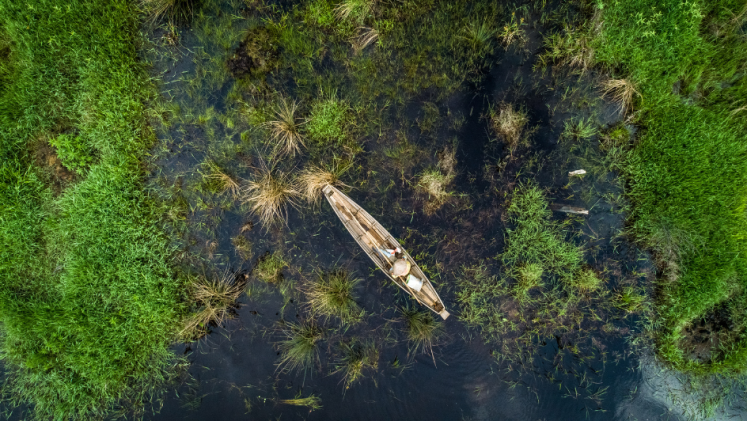Wetlands are areas that are saturated or flooded with water either permanently or seasonally and are valuable and diverse ecosystems providing various nature-based solutions to mitigate and adapt to climate change. There are three wetland categories: inland wetlands (such as marshes and peatlands, rivers, lakes, floodplains and swamps), coastal wetlands (saltwater marshes, estuaries, mangroves, lagoons and coral reefs), and human-made wetlands (such as fish ponds, rice paddies and salt pans).
Space for natural processes in wetlands helps buffer adverse impacts of climate change
By evolving with and adapting to climate change, wetland ecosystems can be crucial to buffer climate-related extreme events by retaining and collecting water, tempering heat and reducing CO2 in the atmosphere.
Wetlands reduce flood risk
Functioning as bio-builders and natural sponges, inland wetlands can temporarily store water, reducing the adverse impacts of floods. Additionally, coastal wetlands such as mangroves can also reduce coastal flood risk related to sea level rise by becoming natural barriers, protecting vulnerable communities behind them.
Wetlands help prevent and control soil erosion
Vegetation of coastal wetlands can reduce the speed of waves. Roots help to prevent coastal erosion by anchoring sand and soil, contributing to a climate-resilient coastal landscape.
Healthy wetlands help restore biodiversity and provide ecosystem services
They provide natural habitats for all sorts of flora and fauna. For example, coastal wetlands are havens for young fish and shrimp, which in turn form the basis for sustainable fisheries and provide income for local communities.
The wetter the better: wetlands function as carbon sinks
Areas such as peatlands can store a lot more carbon than they release, but only when they are wet and healthy. While they occupy merely 3 per cent of the global land surface, peatlands currently store twice as much carbon as all forests in the world combined. When being drained and degraded, wetlands turn from carbon sinks to carbon sources and actually emit CO2. Conservation and restoration is therefore crucial.




